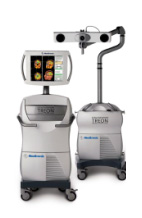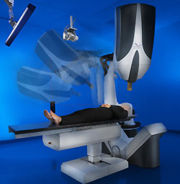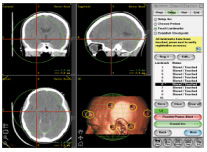Stereotactic
Image Guidance in Brain Surgery
CyberKnife®
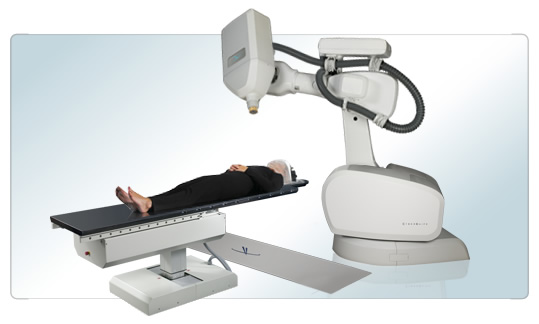
CyberKnife stereotactic radiosurgery system was developed at Stanford around
1994, and was approved by FDA in 2001 for radiation treatment of
tumors in various parts of the body. The CyberKnife system uses a
combination of robotics and image-guidance technologies. Unlike Gamma Knife, which uses sources of gamma radiation, CyberKnife
employs a linear accelerator (LINAC), which produces high-energy X-rays.
Also, unlike Gamma Knife, CyberKnife technology is not limited to
cranial radiosurgery, but is often used for treatment of spinal
tumors.
During
treatment, a moveable arm (a gantry) with a LINAC source rotates around
the patient, delivering radiation beams from many different
directions to precisely targeted area.
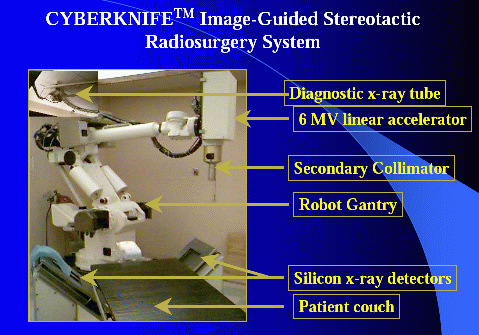
CyberKnife can be equipped with a real-time imaging
system with guidance cameras,
which allows to register the location of the body, and to aim the
robotic arm in 3D coordinate system, delivering highly focused beams of
radiation that converge at the tumor. The system can also compensate
for patient movement during surgery, thus a surgically-fixed
rigid frame is not necessary.
CyberKnife can be integrated with the Synchrony technology, which uses
a complex system of cameras, motion tracking software, fiber optic
sensing technology, infrared emitters and a special formfitting elastic
patient garment (e.g. facial mask in case of brain surgery). The system
can correlate the movement of external body surface with the
movement of internal tumor, effectively locking on the target.

